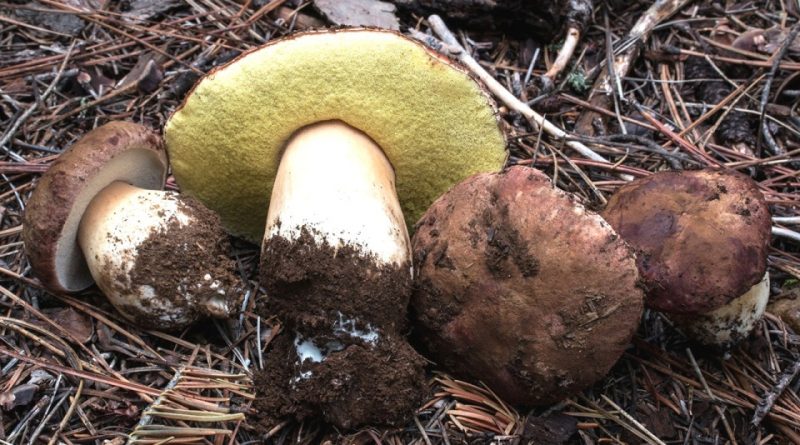Boletus pinophilus
Boletus pinophilus
The red porcine (Boletus pinophilus (Pilát & Dermek)) is an edible mushroom that belongs to the Boletaceae family.
Systematics –
From the systematic point of view it belongs to the Eukaryota Domain, Kingdom Fungi, Basidiomycota Division, Basidiomycetes Class, Order Boletales, Family Boletaceae and therefore to the genus Boletus and to the B. Pinophilus species.
It is a synonym Boletus pinicola (Vittad.) Venturi.
Etymology –
According to some authors, the term Boletus derives from the Greek βωλήτης bolétes, with which the Greeks called a kind of mushroom (from βωλος bólos with the meaning of gleba, clod, bush, because growing among the clods or bushy places); according to others, the meaning of βωλος is to be understood as the shape of a ball, since the hat of most mushrooms is globular; according to others, it derives from Bolites, a name used by the Romans to indicate the best edible mushrooms, even if originally referring only to the ova (Amanita cesarea), but soon used to call also porcini mushrooms. The specific pinophilus epithet comes from the Latin pīnus ‘pino’ and from the Greek φίλος phílos ‘beloved’, hence “lover of the pines”, for its presumed preferential habitat.
Geographic Distribution and Habitat –
Boletus pinophilus is a symbiotic mushroom that fructifies from spring to autumn, both under conifers and under broad-leaved trees. In Italy it is found in the Alps, near conifers, and it is also widespread in the cooler stations of the northern Apennines in mixed woods with resinous (white and red fir) and mesophilous broad-leaved (beech, chestnut, maple, major ash). It is also present in the center-south but at higher altitudes.
Recognition –
Boletus pinophilus is recognized for having a 4-20 cm hat, fleshy, convex, then expanded red-brown or chestnut; first smooth and smooth, then slightly velvety. The pores are pores are small and white in color initially and then yellow or olive. The tubules are immutable, adnate to the stem and yellow. The stem measures an average of 5-10 × 3-6 cm; it is robust, round, with a dry surface, covered by a fine reddish lattice more visible in the upper part; it is whitish or shaded towards brown, with shades similar to those of the hat. The meat of this porcino turns towards a vinous-dark color under the cuticle of the hat and has a mushroom smell or a rather pleasant musk and sweet taste, of hazelnuts. Microscopy shows spores of 12.5-18.0 × 4.0-5.0 μm, sub-fusiformes, olivasters or brown tobacco in bulk, with numerous vacuoles.
Cultivation –
Like all symbiotic edible mushrooms it is difficult to cultivate. It is in fact about intervening on a couple of living beings, each with their own needs; the greatest difficulty consists in obtaining the symbiotic association between the fungus and the root. In the last decades, significant progress has been made, but much remains to be done for real economically and technically controllable cultivation.
Uses and Traditions –
Porcino Rosso is normally the first ever porcino to make its appearance in the Italian woods, until late autumn. It is an excellent boleto, despite its slightly aromatic flavor compared to other porcini species. However, in some areas it is also considered better than the Boletus edulis.
It is certainly the porcino that reaches the largest sizes; often specimens have been found that reach 2 kg or more. Despite having a wide and generalized diffusion, there are some sites where with greater insistence and abundance it is resident. The forest of Varena behind the homonymous village, in Val di Fiemme in Trentino, is for example one of these privileged areas for the collection of the Boletus pinophilus. It is evident that the indiscriminate collection for the gradual reduction of many habitats is always discouraged.
The Boletus pinophilus has the particularity of dyeing the cooking water with a greenish color while not losing the typical color of the hat, which easily distinguishes it from other porcini mushrooms, in particular from Boletus edulis, with which it is similar for the shiny appearance of the cuticle and roughness.
Preparation Mode –
The red pork is an excellent edible. It can be cooked and stored in any way, like other edible porcini mushrooms, even if it is less fragrant and tasty than the whole Edules section which includes Boletus edulis, Boletus reticulatus, Boletus aereus. In young subjects, the meat is very tenacious, requires adequate cooking.
Guido Bissanti
Sources
– Wikipedia, the free encyclopedia.
– Cetto B., 2008. Real mushrooms, Saturnia, Trento.
– Pignatti S., 1982. Flora of Italy, Edagricole, Bologna.
– Conti F., Abbate G., Alessandrini A., Blasi C. (edited by), 2005. An annotated checklist of the Italian vascular flora, Palombi Editore.
Warning: Pharmaceutical applications and alimurgical uses are indicated for informational purposes only and do not in any way represent a medical prescription; there is therefore no liability for their use for curative, aesthetic or food purposes.


